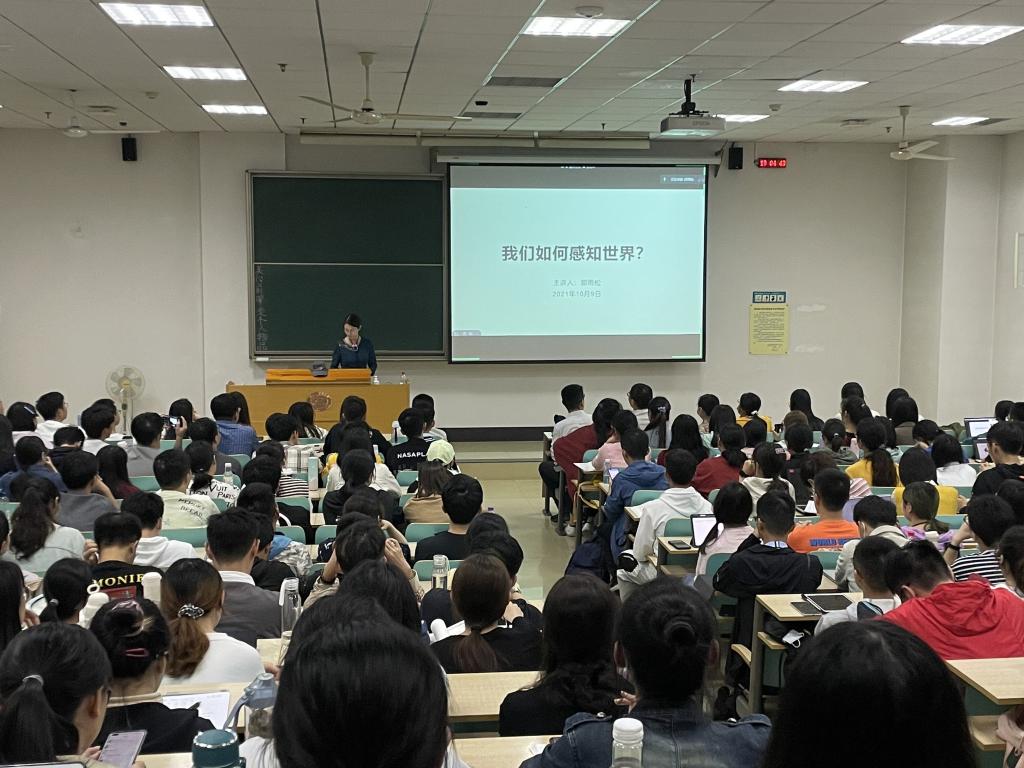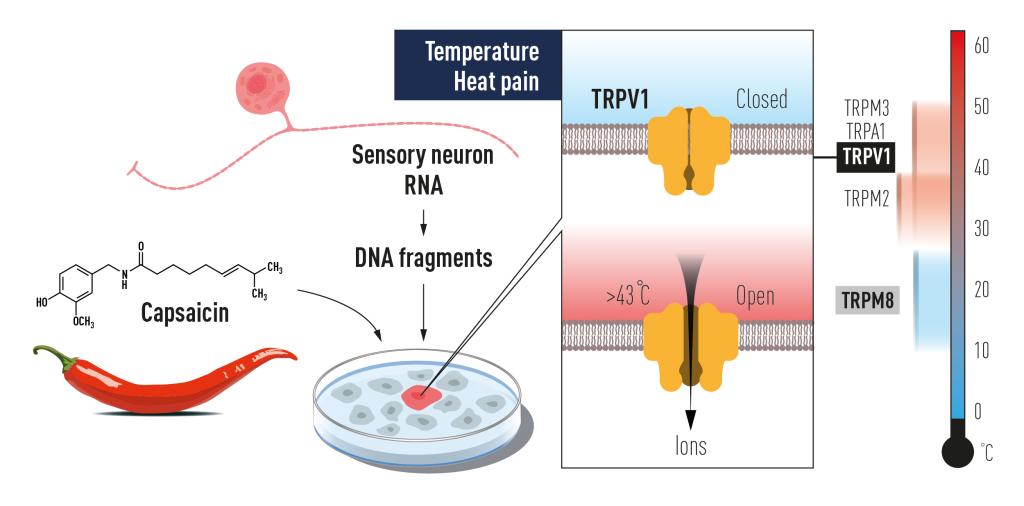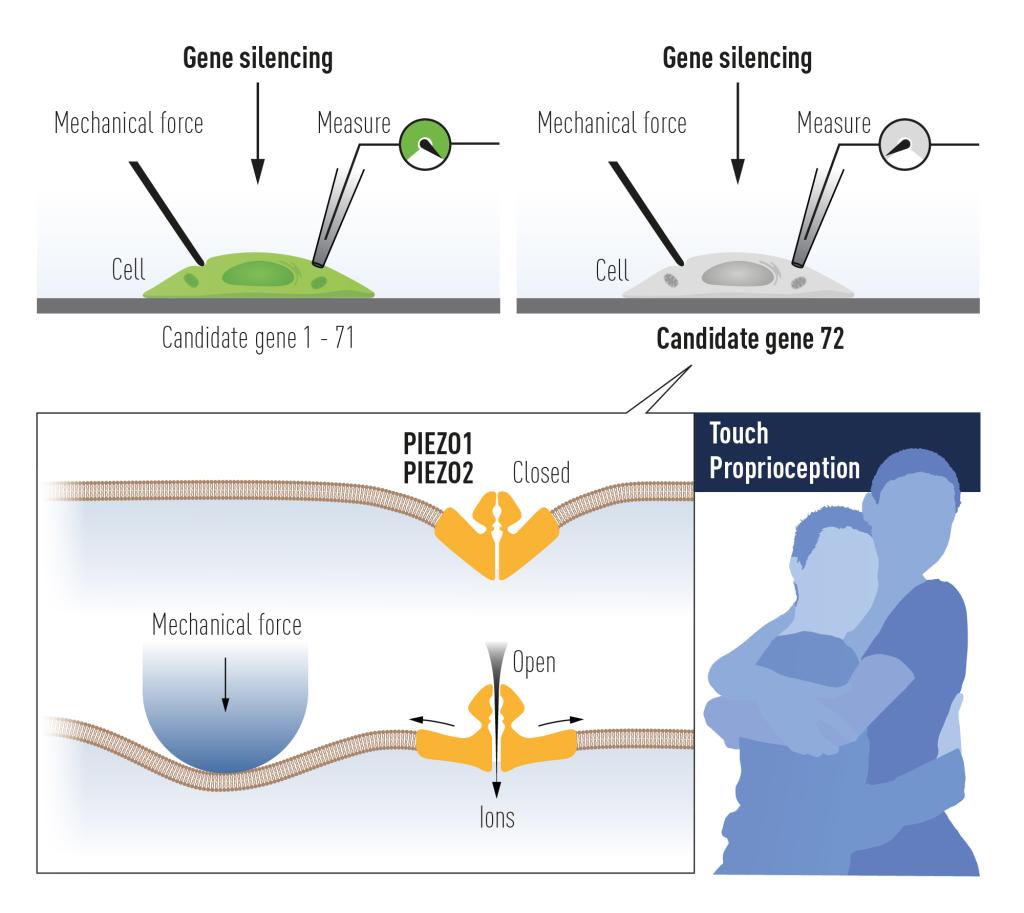On October 9, 2021, the Federation of Young Scholars of School of Basic Medicine hosted a lecture on the 2021 Nobel Prize in Physiology or Medicine in Building 2 of Tongji Medical College. The lecture was moderated by Yan LI, a professor of Department of Pathogenic Biology and meanwhile president of the Federation. Prof. Yusong GUO from the Department of Biochemistry and Molecular Biology is the keynote speaker. Teachers, graduates and undergraduates from all departments attend the lecture in person. As the lecture is livestreamed online at the same time, the number of attendees, including those online and offline, reaches about 400.

Under the title It All Makes Sense, this lecture works as a popularization of Nobel Prize. Prof. Guo introduces to the audience two Nobel Prize winners in 2021 and their findings, namely, David Julius from the University of California and Ardem Patapoutian from the Howard Hughes Medical Institute at Scripps Research, both of whom are awarded with the 2021 Nobel Prize in Physiology or Medicine for their discoveries of receptors for temperature and touch. Prof. Guo leads the audience into the realm of five senses. In order to help the audience to understand of the process of winning a Nobel Prize better, Prof. Guo introduces the timeline of two winners' researches respectively and the importance of their findings on related diseases.
Prof. Guo first introduced David Julius who discovered capsaicin in chili pepper. David Julius at the University of California, San Francisco, USA, saw the possibility for major advances by analyzing how the chemical compound capsaicin causes the burning sensation we feel when we come into contact with chili peppers. Julius and his team created a library of millions of DNA fragments corresponding to genes that are expressed in the sensory neurons which can react to pain, heat and touch. They then plugged genes from this collection into cultured cells that do not normally react to capsaicin. After a laborious search, a single gene was identified that was able to make cells capsaicin sensitive (Figure 1), and this newly discovered capsaicin receptor was later named TRPV1. In 2000, when Julius investigated the protein's ability to respond to heat, he realized that he had discovered a heat-sensing receptor that is activated at temperatures perceived as painful (Figure 1).

Figure 1 David Julius used capsaicin from chili peppers to identify TRPV1, an ion channel activated by painful heat. Additional related ion channels were identified and we now understand how different temperatures can induce electrical signals in the nervous system.
Next, Prof. Guo introduced Ardem Patapoutian who used pressure-sensitive cells to discover a novel class of sensors that respond to "mechanical stimuli" that are felt as touch and pressure in the skin and internal organs. Ardem Patapoutian, working at Scripps Research in La Jolla, California, USA, and his collaborators first identified a cell line that gave off a measurable electric signal when individual cells were poked with a micropipette. The team then identified 72 candidate genes that could be encoding receptors and "switched them off" one by one to discover the one responsible for mechanosensitivity. These genes were inactivated one by one to discover the gene responsible for mechanosensitivity in the studied cells. After an arduous search, Patapoutian and his co-workers succeeded in identifying a single gene whose silencing rendered the cells insensitive to poking with the micropipette. A new and entirely unknown mechanosensitive ion channel had been discovered and was given the name Piezo1, after the Greek word for pressure (í; píesi). Through its similarity to Piezo1, a second gene was discovered and named Piezo2. Sensory neurons were found to express high levels of Piezo2 and further studies firmly established that Piezo1 and Piezo2 are ion channels that are directly activated by the exertion of pressure on cell membranes (Figure 2). Prof. Guo also introduced the structure and gating mechanism of Piezo. In 2017, it is Prof. Guo who first decoded more complete spatial structure of Piezo 1, based on which the gating mechanism hypothesis of Piezo channels was proposed and then verified by experiments.

Figure 2 Patapoutian used cultured mechanosensitive cells to identify an ion channel activated by mechanical force. After painstaking work, Piezo1 was identified. Based on its similarity to Piezo1, a second ion channel was found (Piezo2).
At the end of this lecture, Prof. Guo further introduced TRP channels and the medical application of Piezo channels. TRPV channels are central for our ability to perceive temperature ranging from 10°C to 60°C. TRPV channels enable people to react to heat and pain, and even play a role in the "itch-scratch" process! As for Piezo, it is closely related to anemia, proprioceptive defects, body development and cancer. Astronauts may suffer from muscle atrophy and osteoporosis since they are exposed to a gravity-free environment for a long time. A research on Piezo may figure out what underlines the above-mentioned problem and even suggest how to prevent or cure the problem. It is believed that in-depth researches on the structure and function of TRP channels and Piezo channels will be vital to the development of treatments for various diseases in the near future.

The audience gives so much favorable comment to Prof. Guo's introduction to two Nobel Prize winners and their findings. Students present interact actively with the speaker and ask so many questions even after the lecture. It seems that this lecture unleashes the audience's enthusiasm for fundamental research. Meanwhile, the active interaction between Prof. Guo and the audience also shows that HUSTers never forget their burning ambition to rejuvenate the country through science and technology.
An introduction to the speaker Prof. Yusong GUO
Yusong GUO is a professor of Department of Biochemistry and Molecular Biology, School of Basic Medicine, Tongji Medical College, Huazhong University of Science and Technology. Prof. Guo is a supervisor of PhD students and is on the list of "100 talents" of Hubei province. She mainly researches the structure, working mechanism and regulation of mechanosensitive ion channel Piezo. In recent years, she publishes a lot as the first author in international journals including Nature, PNAS, eLife, Journal of Virology, PLoS Pathogens, and Cell Discovery.